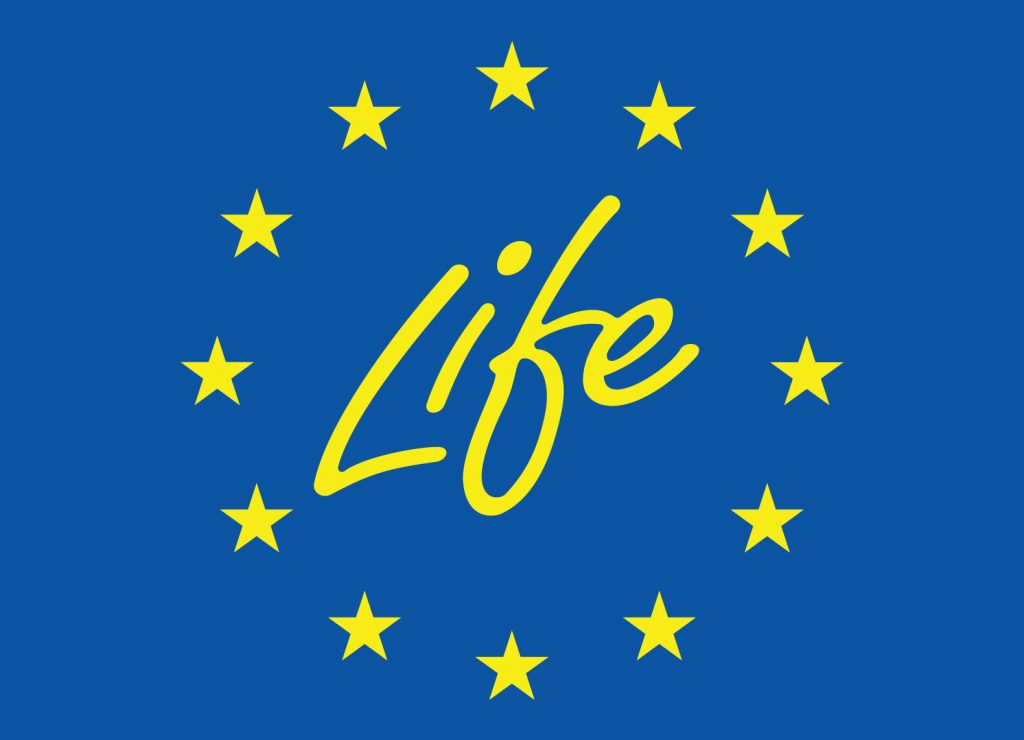"Our research aims to validate AgroPaper® mulch as a source of organic matter that is able to improve soil quality and health.”
On International Soil Conservation Day, 7 July, the Life AgroPaper® project shares this interview with Carlos García Izquierdo, Research Professor at the Consejo Superior de Investigaciones Científicas (CSIC) at the Centro de Edafología y Biología Aplicada del Segura (CEBAS). Carlos leads the research group in charge of evaluating soil fertility in test soils using AgroPaper®, among other contributions.
With a degree and PhD in Chemistry from the University of Murcia, he is a Research Professor at CEBAS-CSIC, of which he was Director. He currently leads a 22-person research group on “Enzymology and bioremediation of soils and organic waste”, with which he carries out European and national research projects with companies… In this interview we talk about the future of agriculture, its sustainability and, most importantly, the basis of it all: the soil, its biodiversity and functionality.
What does the Life AgroPaper® project propose?
The AgroPaper® project proposes the elimination of plastics for paper in mulching agriculture. From an environmental point of view, this is already worthwhile because, although we talk about biodegradable plastics, in the end, what is included in the soil are microplastics, and we must try by all means to prevent them from reaching the environment in the way they are reaching it.
What is the role of CEBAS-CSIC in the Life AgroPaper® project?
Our work is based on:
– Assessing soil fertility in test soils, from an agronomic and environmental perspective, with the impact on key aspects such as health, biodiversity and carbon fixation in agricultural soils. All this will be promoted by the incorporation into the soil of exogenous quality carbon from the degradation of AgroPaper® in these soils.
– Evaluate the effectiveness of AgroPaper® in relation to the yield of each of the crops tested in comparison with conventional mulching.
What is the work of the research group you lead in the development of Life AgroPaper®?
The group I lead is introducing into the project the hypothesis that, in addition to being able to make the seedling behave in the same way with paper as with plastic and it achieves similar results, we can also give it added value by providing organic matter through the cellulose used. In other words, if when the cultivation and mulching process is finished, we integrate the cellulose into the soil in an appropriate manner as a source of organic matter – and which has also been subjected to climatic processes during the cultivation period and therefore its degradability has increased – this semi-degraded cellulose is capable of entering the soil and activating biogeochemical cycles of the important elements. In this way we will have succeeded, on the one hand, in exchanging plastic for paper, and on the other hand, in introducing a source of organic matter that is recycled as such and is capable of improving quality and health. In the long run, by improving the biodiversity and functionality of the soil, it is possible that the amount of mineral inputs or agrochemicals consumed can be reduced.
For International Soil Conservation Day, let’s talk about soil.
Would you say that soil has always been the “forgotten” natural resource?
Soil has always been the forgotten resource. Let me give you a very clear example: there are natural resources such as water or air, for which quality parameters are clearly defined. On the other hand, there is a natural resource that is just as important, or even more important at certain times, such as soil, and which has never even been able to establish the quality or health parameters that are so necessary. This means that it has been forgotten in comparison with other natural resources when soil, the value it has, is that it is something living, dynamic and that the planet will live from its conservation.
Now, after being ostracised for many years, Europe has realised (and is taking into account) the importance of soil in the agricultural world, and is therefore putting a lot of “meat on the grill”. We are already dependent on energy, so imagine if we were to depend on third countries for our food, it would be chaos!
In this regard, it would be good if you could talk to us about the multifunctionality of the soil, which is essential to continue producing food, right?
We should be concerned about the soil, conceiving it as a resource that is capable of eliminating pollutants, capable of managing the flow of water within the system and capable of managing what is called the soil microbiome, that is, all the species of microorganisms and genes that are arranged in a certain way so that the soil can perform its functions, with the aim of providing the ecosystem services that we ask of the soil. And within these services, there are two basic ones: one, to produce and to do so in a sustainable way, and two, to manage carbon sequestration in the soil to mitigate climate change.
The trend is towards intelligent agriculture (never better said), adapted to climate change and capable of mitigating some of its effects. This is the agriculture of the future and in this agriculture, soil micro-organisms play a fundamental role.
The organic part is becoming more and more important. And right now, there is nothing that can be done about soil in Europe without considering the biodiversity that exists in the soil. Within this biodiversity, macro and micro, the micro – which conditions the soil microbiome – is the one that is becoming very important because of the number of processes on which it depends and because this implementation of the process generates the real quality and health of the soil, which is what we are aiming for: that it is produced in a sustainable way.
But what do we mean by “sustainable”?
I understand sustainability as the capacity we can have to produce today and still be producing in the same place in 20 or 30 years’ time. I am convinced that the agriculture that is now based largely on “simplicity” and the productivity it generates has to shift to a transition towards the establishment of much more sustainable agro-ecosystems. Possibly, at the beginning of a transformation to more sustainable management, conventional agriculture will produce more. But the question is not only to produce now, but also to be able to continue producing in the same way in 10 years.
It seems that sometimes the concept of “sustainable” is perverted… How can an agriculture that uses herbicides, for example, be considered “sustainable”?
Sustainability is sometimes used too loosely, and this has led to the term falling into disuse a few years ago. It has come back to the fore because it really is the term that best defines future farming and smart farming: being able to produce where I am today and also being able to do so in 10/20 years’ time. That is true sustainability. With the example of herbicides… I would say that any type of agrochemical that we use on the soil, what it is going to act against is precisely the biodiversity of the soil. Agrochemicals do not distinguish between good and bad, they kill everything, and therefore have a negative influence on the soil’s own biota. This is not sustainable, and on the other hand, there are criteria that use sustainability and are capable of using agrochemicals.
What is very difficult, however, is when a farmer has a pest in his crops, to tell him not to use agrochemicals, but to make him understand that these problems can be solved in a much more sustainable way than what is currently being done. Farmers need to be helped and this help involves putting solutions and actions on the table, such as establishing good guidelines and strategies to grow crops using fewer mineral inputs and less agrochemicals. All this transition towards sustainable agriculture is what is needed so that agriculture is not a threat but an ally in soil sustainability. Therefore, the transition we are talking about involves providing solutions. And science has them.
What kind of management is involved in this transition towards more sustainable agroecosystems?
On the one hand, soil management, which is basic. This management involves, for example, from the least possible movement in order to eliminate losses of organic matter (which is one of the reasons why soils lose productivity and fertility; soil movement in this sense must be avoided) to the application of crop rotation to avoid pests. For me, the key is to establish a use of fertilisation that is much more linked to the soil than to the plant.
Can you tell us about that fertilisation?
There are certain paradigms we are trying to change and one of them is about fertilisation. Fertilising the plant is one option, but it is not only necessary to fertilise the plant but also to fertilise the soil, so that sustainable agriculture is conditioned from the soil. In this sense, we talk about the application of beneficial micro-organisms for agriculture, but first we must know the status of the soil so that these organisms can do the work they really have to do. The idea that fertilisation is all about adding NPK fertiliser is no longer valid because it is not about whether the soil has that NPK but about how it has it, how it is assimilated by plants and microorganisms, how it is structured in the soil….
It is very nice to talk about the effectiveness of micro-organisms in agriculture but let’s not forget that this has to go into the soil and the soil has to do its work with them. Therefore, we have to introduce a better use of organic inputs, so that the plant gradually assumes them as it needs them, and this will avoid problems of losses due to volatilisation, contamination by leaching….. This is the change towards the transition that has to be made, and these are the doors that have to be opened to farmers. There are strategies, they can already count on them and they are very acceptable over time. You may not get the expected production in the first year but you have to think in the long run and in 5 or 10 years the results are evident.
“Soil micro-organisms play a key role in the agriculture of the future”.

